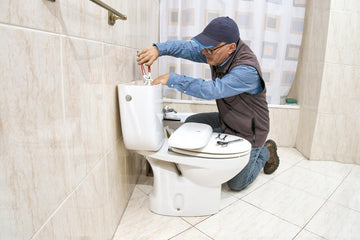In recent years, the plumbing industry has seen a surge in the popularity of toilets with adjustable flush rates. These innovative fixtures allow users to modify the amount of water used per flush, providing a flexible solution for both water conservation and effective waste removal. As concerns over environmental sustainability continue to grow, the demand for such solutions has become more pertinent than ever.
For industry QA professionals, understanding the intricacies of these toilets is crucial. Not only do they represent a significant advancement in plumbing technology, but they also offer a viable means of addressing water scarcity issues worldwide. In this article, we will delve into the workings of toilets with adjustable flush rates, their benefits, and how they are poised to transform the plumbing industry.

What Are Toilets with Adjustable Flush Rates?
At their core, toilets with adjustable flush rates are designed to allow users to select the amount of water used per flush. This can be particularly advantageous in households or facilities where water usage needs to be meticulously managed. By offering different flush volumes, these toilets cater to both liquid and solid waste, ensuring efficient waste removal while minimizing water consumption.
The mechanism behind these toilets typically involves a dual-flush system, where users can choose between a full flush for solid waste and a reduced flush for liquid waste. This flexibility not only promotes water efficiency but also reduces the strain on sewage systems, ultimately leading to cost savings on water bills.
The Environmental Impact
The environmental benefits of toilets with adjustable flush rates are significant. Traditional toilets can use as much as 3.5 gallons of water per flush, whereas modern low-flow toilets with adjustable settings can use as little as 0.8 gallons for a reduced flush. This drastic reduction in water usage can be a game-changer for conservation efforts.
According to the Environmental Protection Agency, toilets account for nearly 30% of residential indoor water consumption. By switching to adjustable flush rate toilets, households can significantly decrease their water usage, contributing to larger conservation goals. For more in-depth information on water conservation, you can refer to the role of toilets in water conservation.
Technological Innovations Driving Change
The advent of toilets with adjustable flush rates has been driven by several technological innovations. The integration of smart technology has further enhanced the functionality of these toilets, allowing for automatic adjustments based on usage patterns. Some models even incorporate sensors that detect the type of waste and adjust the flush rate accordingly.
These advancements not only improve user convenience but also ensure optimal water usage. The incorporation of smart technology in plumbing fixtures is a testament to the evolving landscape of the industry, where efficiency and sustainability are at the forefront.
Challenges and Considerations
While the benefits of toilets with adjustable flush rates are clear, there are certain challenges that industry QA professionals need to consider. Installation and maintenance of these systems can be more complex compared to traditional toilets. It is essential for professionals to be well-versed in the technical aspects to ensure proper functionality and longevity of the fixtures.
Additionally, there may be initial costs associated with upgrading to these systems. However, the long-term savings on water bills and the positive environmental impact often outweigh the initial investment.
Conclusion: The Future of Plumbing
As the plumbing industry continues to evolve, toilets with adjustable flush rates are set to play a pivotal role in shaping the future of water conservation. Their ability to balance efficient waste removal with minimal water usage makes them a valuable addition to any household or facility. For those in the industry, understanding the nuances of these fixtures is essential to staying ahead of the curve and contributing to sustainable development.
For more insights into plumbing innovations, you can explore high-efficiency toilets and dual-flush toilet systems.

FAQs
What is the main advantage of toilets with adjustable flush rates?
The main advantage is their ability to conserve water by allowing users to select the appropriate flush volume for liquid or solid waste, leading to reduced water consumption and cost savings.
Are these toilets easy to install?
While they may require more technical expertise for installation compared to traditional toilets, many manufacturers provide detailed instructions and support to facilitate the process.
Can these toilets significantly reduce water bills?
Yes, by using less water per flush, households can see a noticeable decrease in their water bills over time. The initial investment in these toilets often pays off through long-term savings.






